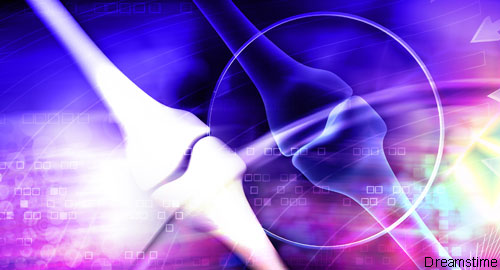 Traditionally, researchers use the expression of either Sox9 or Scx to identify cartilage and tendon progenitors in the limbs, but they also increasingly recognize that these differentiated cells exhibit phenotypic plasticity. To investigate this plasticity further, investigators have developed organo-typic models for cartilage and tendon. The in vitro models of musculoskeletal biology have been widely used, even though some experts question whether or not they actually mimic musculoskeletal tissue. Additionally, although studies to date have revealed that many signaling pathways contribute to the dedifferentiation and redifferentiation pathways of cartilage and tendon, the underlying gene regulatory mechanisms behind the differentiation remain elusive. Consequently, investigators do not know which of these many pathways is likely to dominate during health and disease.
Traditionally, researchers use the expression of either Sox9 or Scx to identify cartilage and tendon progenitors in the limbs, but they also increasingly recognize that these differentiated cells exhibit phenotypic plasticity. To investigate this plasticity further, investigators have developed organo-typic models for cartilage and tendon. The in vitro models of musculoskeletal biology have been widely used, even though some experts question whether or not they actually mimic musculoskeletal tissue. Additionally, although studies to date have revealed that many signaling pathways contribute to the dedifferentiation and redifferentiation pathways of cartilage and tendon, the underlying gene regulatory mechanisms behind the differentiation remain elusive. Consequently, investigators do not know which of these many pathways is likely to dominate during health and disease.
A recent in vitro study suggests that oxidative stress and P13K signaling pathways are key modulators of the phenotype of cells of musculoskeletal origin. Alan J. Mueller, BSc, BVM&S, MRes, MRCVS, a postdoctoral research associate at the University of Liverpool in the U.K., and colleagues published their analysis of chondrocyte differentiation online on Sept. 27 in Scientific Reports.1 The investigators sought to establish a framework that could drive rational improvements in cell culture models of cartilage and tendon. To accomplish this element, they used a systems biology network approach and analyzed gene expression profiles of cells in monolayer and three-dimensional cultures. Their experiments confirmed that dedifferentiation occurred via reductions in the expression of genes that are hallmarks of functionality in cartilage (Col2a1, Agcn) and tendon (Tnmd, Serpinf1).
The scientists began their research by culturing musculoskeletal cells in a monolayer. They found that, as the cells proliferated in vitro, they had a similar synthetic profile to predifferentiated mesenchymal cells. Specifically, the cultured musculoskeletal cells experienced phenotypic drift that converged in passage five into the gene expression profiles for chondrocytes, tenocytes and dermal fibroblasts. They further identified TGF-β as the master regulator of phenotype in the monolayer cultures. These results prompted the investigators to raise concerns that the convergence of gene expression profiles during monolayer expansion of cartilage and tendon cells implied that the monolayer culture system was not physiologically relevant.
To visualize musculoskeletal cell responses to novel environments, the team turned to three-dimensional culture models. They found that, unlike in monolayer culture, PDGF BB was the master regulator of phenotype in the three-dimensional system. Additionally, the three-dimensional constructs caused an increase in markers of oxidative stress and hypoxia. The authors found this particularly noteworthy because oxidative stress is considered to play an important role in the development of the dysfunctional cartilage and tendon seen in patients with osteoarthritis and tendinopathy. The investigators also found increased expression of chondrogenic and tenogenic markers, increased expression of inflammatory chemokines and a lack of expression of functional differentiation markers in the cells cultured in the three-dimensional model. They note, however, that although these signaling pathways are associated with cartilage and tendon disease, the gene regulatory mechanisms may not be the underlying cause of disease.
The authors conclude by emphasizing the common regulatory mechanisms governing de- and redifferentiation transitions in cartilage and tendon cells. They also note that, in its totality, their research provides testable networks that can be used for future analyses of sustained or directed differentiation of cartilage and tendon.
Lara C. Pullen, PhD, is a medical writer based in the Chicago area.
Reference
- Mueller AJ, Tew SR, Vasieva O, et al. A systems biology approach to defining regulatory mechanisms for cartilage and tendon cell phenotypes. Sci Rep. 2016 Sep 27;6:33956. doi: 10.1038/srep33956.